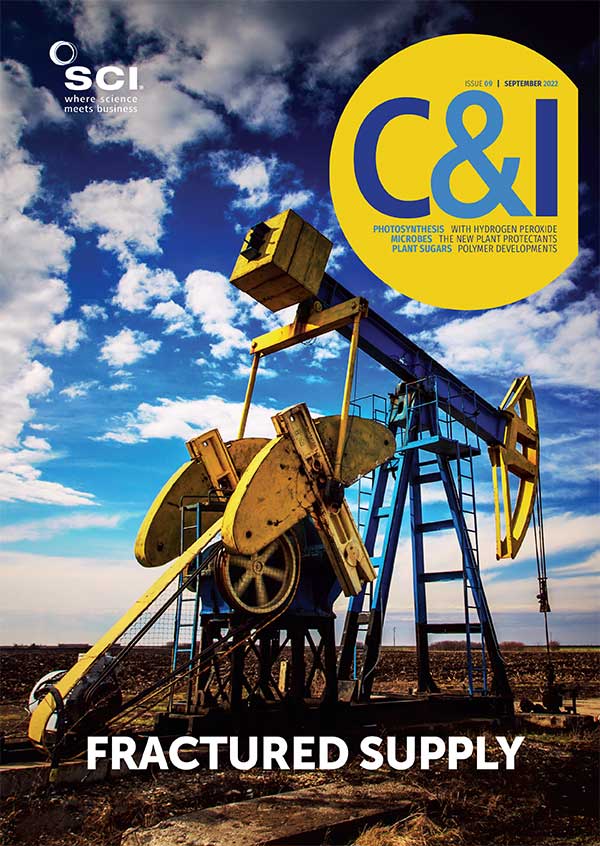David Bott, Head of innovation, SCI
 Not a lot of people would think carbon was a critical element
Not a lot of people would think carbon was a critical element
There is a lot of talk about Critical Materials (or sometimes Minerals) – indeed the UK Government has just issued a strategy on the subject.1 The topic is not new, and there have been a number of reports on the topic over the last 20 years. As a chemist, I should probably start by correcting the use of language – we are mostly talking about elements here!
I think is useful to unpack what makes an element ‘critical’.
The first factor undoubtedly should be how much of the element exists (on our planet!). This is difficult to measure directly, but there are estimates that most scientists agree on, so I will use those. The Earth has a mass just below 6x1021 tonnes. It made up of the core (about 32% of the earth’s mass), which is largely iron; the mantle (about 65% of the mass), which is made up of 44.8% oxygen, 21.5% silicon, 22.8% magnesium with lesser amounts of iron, aluminium, calcium, sodium, and potassium; and the crust (about 3% of the mass and where we get most of our resources from) is 46.1% oxygen, 28.2% silicon, 8.23% aluminium, 5.63% iron, 4.15% calcium, 2.36% sodium, 2.33% magnesium, 2.09% potassium, 0.565% titanium, 0.140% hydrogen and a very long tail of the other elements.
It is worth noting that this means there are about 1019 t of iron in the crust – at the current rate of use there are 4bn years supply left! At the other end of the scale, astatine, where only about 25g exist, and the higher atomic number elements, which are often the product of nuclear reactions, populate any list of ‘rarest elements’. But, for the most part, the majority of elements are pretty common.
The second factor would probably be the cost of extraction and refining. Firstly, there is the question of where they can be found but accessing these elements as they exist in the earth comes at a cost. Once extracted, there is the complication that very few elements exist in their elemental form (many exist as oxides) and this requires (at least one) chemical reaction – that needs energy and often uses carbon as a reducing agent – to get the element into a usable form.
The third factor is how much we currently need, which has varied over time – a few hundred years ago, iron was probably a critical element. Governments regularly think about this and produce lists. The current EU list of critical materials consists mainly of elements used to give metals high performance or in semiconductors.2 Interestingly, lithium has only been added recently as its importance in batteries for electric vehicles has risen.
I am guessing not a lot of people would think carbon was a critical element, but it may well be in a few decades.
And the reason for this is that, for the last 100 or so years, we have enjoyed a cheap and readily available source of carbon – from fossil deposits laid down 150m years ago. We have built many industries on the use of this carbon, not as a fuel but as a raw material or ‘feedstock’. Each year we use about 2.6bn t of carbon dioxide equivalent to provide the raw input materials for industries including construction, automotive, electronics, textiles, homeware, paint and personal care – the ‘made’ world we live in depends on fossil carbon for its most of its substance!
But we now know that this use of the fossil carbon comes at a price – we are systematically changing our climate in a way that makes human life more difficult. We have therefore committed to NOT use fossil carbon in the future – by 2050 (or later) we will stop. It may already be too late, but that timescale is where the political will lies.
Cutting the use of fossil carbon as a fuel is underway and is arguably technically easy. The outlier is aviation, where the industry has embarked on a drive to produce ‘sustainable aviation fuel’, where either biomass or recycled fossil carbon is used to make molecules equivalent to the ones currently derived from petrochemicals.
Replacing fossil carbon feedstocks is a more complicated challenge. There is obviously a large source in the atmosphere – where we have been ‘storing’ it for the last century or so. We can use vegetation of all sorts to fix atmospheric carbon as polysaccharides, but the capacity of this process is probably not large enough to address our current rate of carbon dioxide production. And there is competition for this source of carbon – as well as the concept of biogenically derived fuels, the land to produce this carbon could also be used to produce food – and as the population continues to grow, this will become another politically pressing issue.
There is much talk of Carbon Capture and Use (CCU), but this is mostly based on capturing the waste streams from processes using fossil carbon as a fuel, which we are targeting to stop! We can use Direct Air Capture, but the concentration of carbon dioxide in the atmosphere is a lot lower than would be found in a waste flue and we are still trying to achieve meaningful efficiencies there! This makes it expensive at the moment, but the price will undoubtedly fall.
So, it is my prediction that if we do all the things we need, and are promising, to do, then carbon will fall under the definition of a critical element – and we will have to think hard about where we get it from and how we allocate its use. And, as such, it requires a plan to make the necessary changes.
There are challenges, the underlying science and technology are well understood, but we will need time to change the factories and supply chains that have been built and optimised based on fossil carbon as a feedstock. This requires commitment from governments and companies to work together as they have done in the automotive and construction sectors – and will need imagination and resolve.
Earth's composition
|
Core |
Mostly iron, although there is nickel in the outer core |
|
Mantle |
44.8% oxygen, 21.5% silicon, 22.8% magnesium with lesser amounts of iron, aluminium, calcium, sodium, and potassium |
|
Crust |
46.1% oxygen, 28.2% silicon, 8.23% aluminium, 5.63% iron, 4.15% calcium, 2.36% sodium, 2.33% magnesium, 2.09% potassium, 0.565% titanium, 0.140% hydrogen and a very long tail of the others |
References
1 gov.uk/government/publications/uk-critical-mineral-strategy/resilience-for-the-future-the-uks-critical-minerals-strategy
2 eur-lex.europa.eu/legal-content/EN/TXT/PDF/?uri=CELEX:52020DC0474&from=EN





